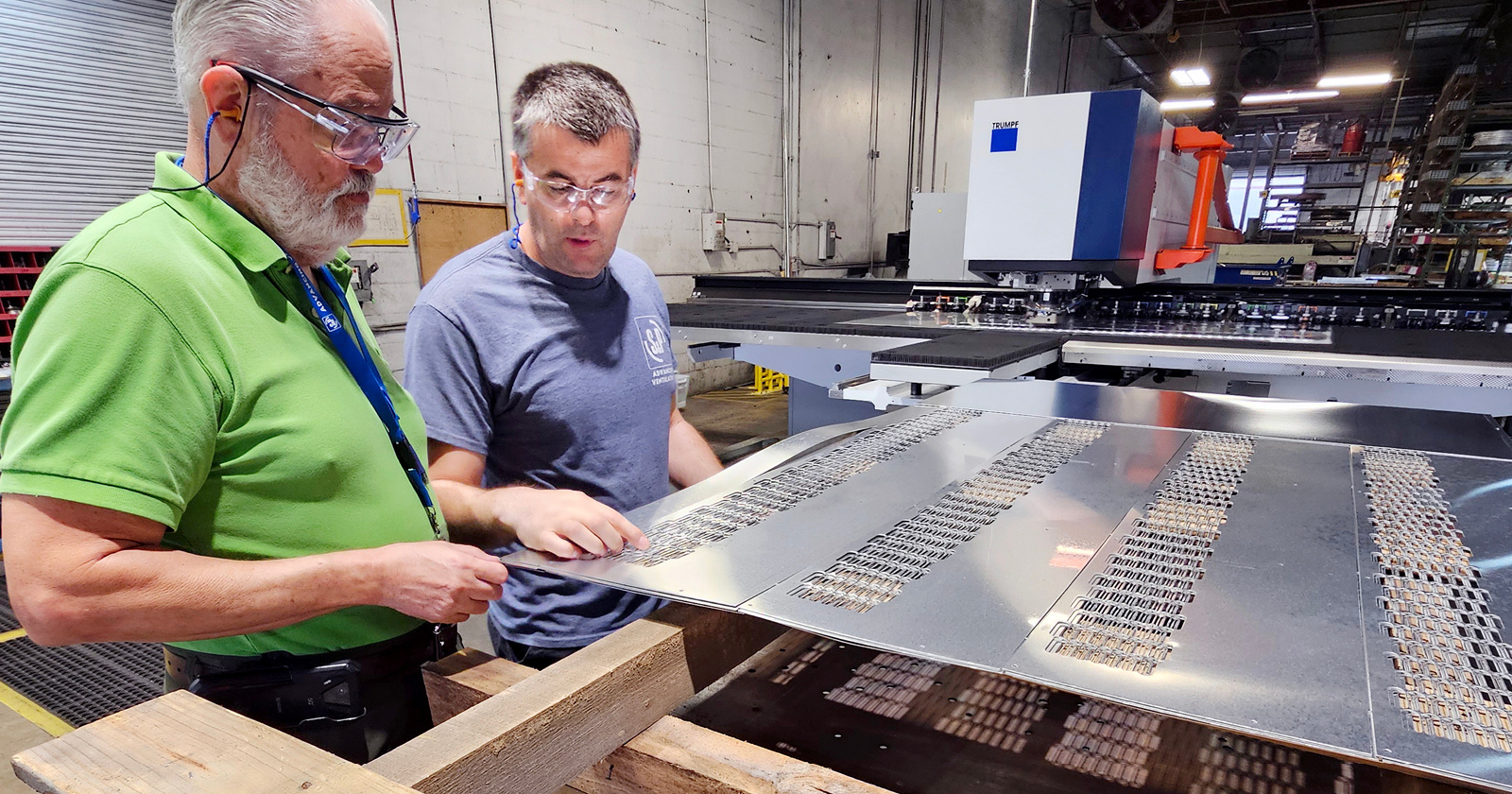Jacksonville, FL—S&P USA Ventilation Systems LLC (S&P USA), has completed a major fabrication equipment upgrade that’s cutting product lead times while increasing capacity and precision. The improvement also increases S&P USA’s ventilation product efficiency and promises future HVAC air movement design versatility and innovations for its North American commercial market.
The nearly $1 million, six-month-long upgrade project brings online a Trumpf Trupunch 5000 Computer Numerical Control (CNC) punch/forming machine; Davi MCA2017 4-Roll CNC Roller; and a Denn RBV-160 custom-designed flanging machine. “This investment keeps us at the forefront of ventilation equipment design, quality control and production,” said Joe D’Elia, Manufacturing Engineering Manager, S&P USA, which fabricates commercial fans for industrial buildings, restaurants and other specialty ventilation applications.
The upgrade has caused lead times to shrink by 20% for the following S&P USA’s product lines: TDD direct drive tubeaxial inline duct fans, TDB belt drive tubeaxial inline duct fans, and CTB inline tubular centrifugal fans.
The new equipment has also helped to facilitate S&P USA’s anticipated mixed flow fan product line expansion. Fan housings were previously imported, but are now fabricated in-house and inventoried at S&P USA’s 89,000-square-foot Jacksonville facility. The improvement increases USA-made parts, cuts import costs, guarantees supply chain lead time reliability and optimizes quality control.
Manufacturing more components domestically also reduces storage requirements for S&P USA’s comprehensive mixed-flow fan product line that ranges up to 48-inches in length and 40-inches in diameter. Instead of supply chain dependence, inventory depletions of any fan body size can be replenished within 2 days. Maintaining a comprehensive inventory also allows for quick turnarounds, especially for build-to-order customers.
The plant improvement also enables S&P USA to expand its offering of mixed-flow fans powered by the growing trend of electronically commutated (EC) motors. S&P USA can now offer more mixed flow fan sizes for both direct drive and belt drive units, the latter which facilitates fan motor placement outside the airflow to protect their computers against hot air degradation.
The new Trumpf Trupunch 5000 performs the same basic cutting/forming work as its predecessor Trumpf 200, but five times faster. It cuts flat pattern metal blanks, but also punches extruded holes, vents, as well as up and down angle forming work (for flanges) all in the same production sequence. It also can use 60 x 120-inch sheets versus the existing machinery’s 48 x 60-inch metal sheet limitations.
S&P USA uses an existing Prima Power laser for general individual cutting and nesting of parts, however, the Trumpf’s gang punching capability is much faster on parts with repetitive hole patterns. It also expands fabrication capacity and relieves some of the demand on existing laser machinery. New Radan software installed on both machines helps compare runtimes and metal sheet utilization. The comparison helps determine whether the laser or punch-cut methodology is the most efficient, cost-effective, and quickest for each project.
The addition of new Radan nesting software combined with the Trumpf also creates more product per metal sheet by increasing material utilization by 20%.
The new roller and flanger has boosted production capacity by 30%, quality control, and efficiency. It enables S&P USA to make perfectly round versus oval-shaped fan housing bodies. Round housings allow for closer clearances of prop fan blade tips to the fan body interior, which in turn leads to greater air movement efficiencies on the TDB and TDD product lines. Round housings also accept straightening vanes more easily and accurately.
Production floor worker health and safety has been increased as well. The Trumpf equipment is 70% quieter than its predecessor, which reduces ambient noise. It rarely punches at full force unless the preprogrammed material type (aluminum, stainless steel, brass, etc.) and gauge dictates it, thus operational sound levels are significantly reduced.
The new fabrication equipment also promises future innovations and product introductions in the future. “We now have the flexibility to develop more product line diversity and design new products that might have been impossible or too costly with the older equipment,” said D’Elia.

